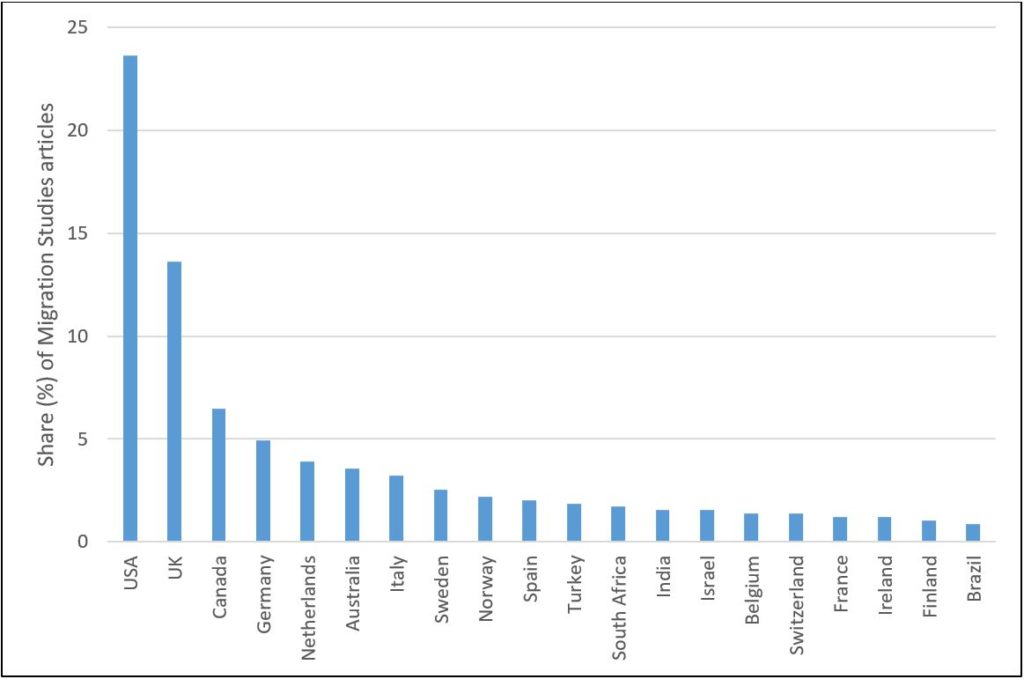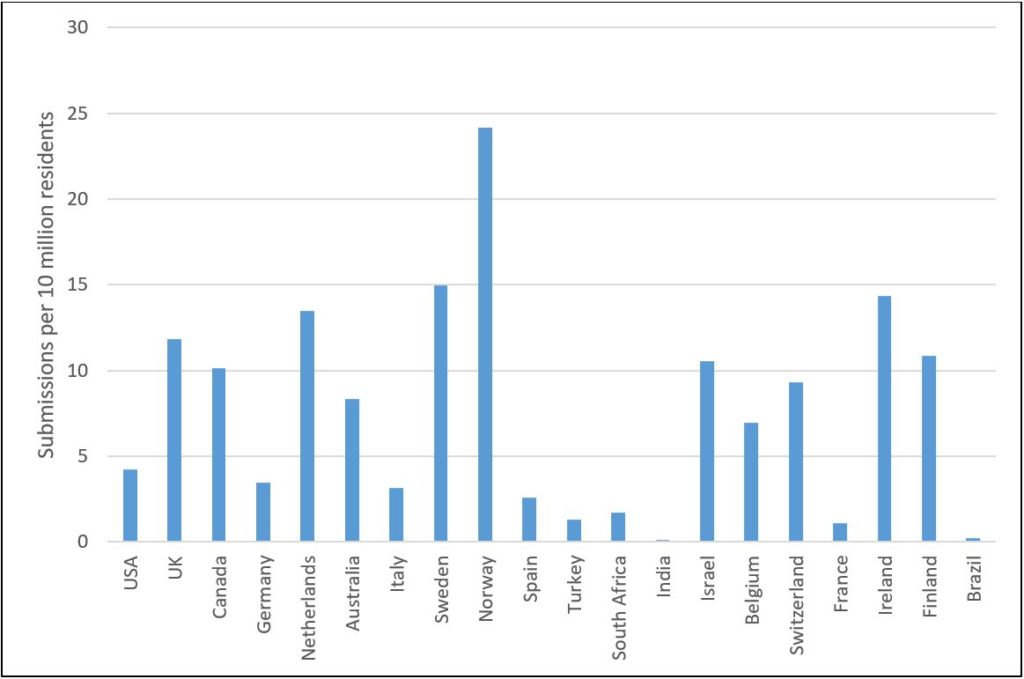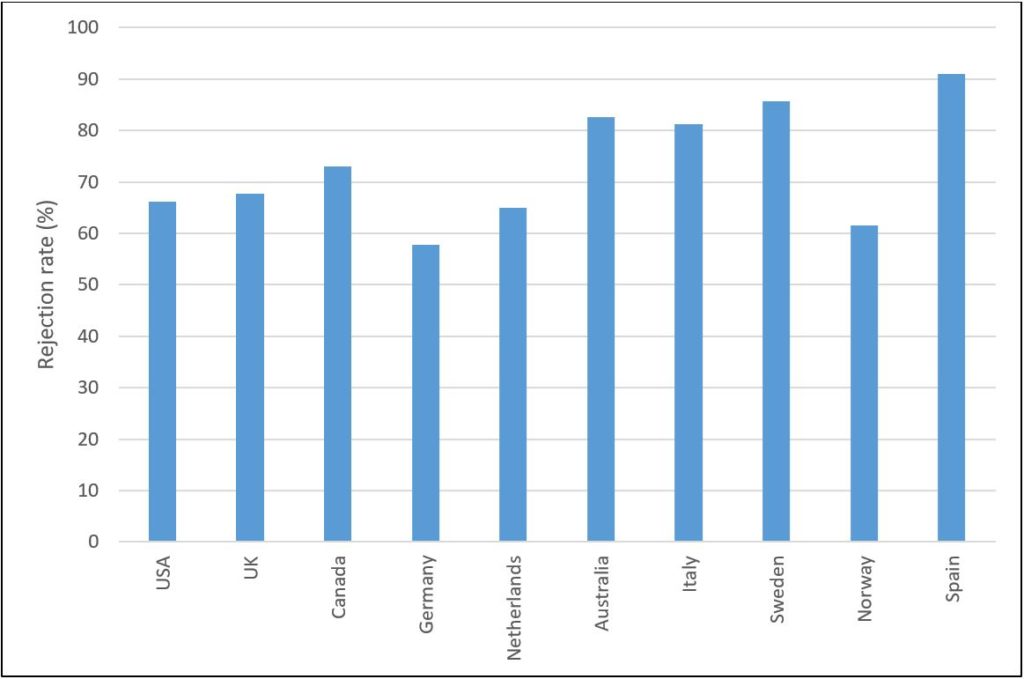Since 2013, together with several colleagues I have been involved in managing the journal Migration Studies. Each quarter we get a comprehensive editorial report (number of submissions, acceptance rate, time to decision, load of different editors, etc.). One section of the report provides these statistics by the country of origin of the contact author. Country of origin is a massively important concept in migration research, but I am not sure what to make of this information in this editorial context. Should we worry that we have received fewer than 5 submissions from Indonesia (population 270 million) and more than 40 from Canada (population 37 million)? In order to shed light on this, it is important to analyse these submission numbers by country of origin.
Production of research
In the period from 2015 to 2018, Migration Studies received 588 manuscripts. These manuscripts were submitted from 75 different countries. Unsurprisingly, the United States is at the top of the list, accounting for close to one quarter of all submissions. As shown in Figure 1, the list of top-20 countries is made mostly of high-income countries. Some countries in the list are not in that category, such as Turkey, South Africa, India, and Brazil, but these are all major producers of academic work. All other countries in the world combined (i.e. those not included in Figure 1) account for just 20% of the submissions to Migration Studies.
Figure 1 – Migration Studies articles by country of origin (2015-2018)

As a second exercise, I took the countries in Figure 1, and divided the number of submissions of each by the population of the country. This gives us a measure of “migration research per capita”. The way to read this figure is the number of submissions to Migration Studies per 10 million people in the country. As shown in Figure 2, this change reveals interest patterns. For instance, Norway is now the dominant country for migration research in the world. Sweden, Ireland and the Netherlands have also become key countries for migration research.
Figure 2 – Migration Studies articles per capita (2015-2018)

In or out?
Of course, submitting a paper is only the beginning of the story. You also need to get the paper accepted for publication. The overall rejection rate at Migration Studies is about 75%. Figure 3 reports this number for the top-10 countries in terms of submissions only. This is done to protect the privacy of researchers from countries with fewer submissions. The rejection rates vary substantially by country of origin and the gap in rejection rates is over 30 percentage points between scholars in Spain and those in Germany.
Figure 3 – Rejection rates by country of origin

What does this say about migration research in general?
Obviously, Migration Studies is just one of several journals publishing migration research, and migration scholars often publish their research in disciplinary journals. Still, assuming that the manuscripts submitted to Migration Studies are broadly representative of the overall research on migration we can have a good idea of who is conducting this research from the analysis above.
There are three broad conclusions that we can make:
(1) The vast majority of migration research seems to be originating in high-income countries. This difference in volume of research has implications for calls to diversify readings in migration related courses, and I am sure that those who are more familiar with that debate can incorporate this fact into their discussions.
(2) Once we adjust for population size, the figures look substantially different. This raises interesting questions. For instance, is this because “local” scholars in these countries are more likely to do migration research, or because some countries are more attractive for migration researchers in the first place?
(3) There are substantial gaps in acceptance rates, even among high-income countries. These gaps are unlikely to reflect a major difference in the quality of migration research across these countries. However, it could be a reflection of differences in the topics covered, writing style and resources available for research in each of these countries. More analysis of this aspect would be very useful and we would welcome any ideas about how to explore it.
